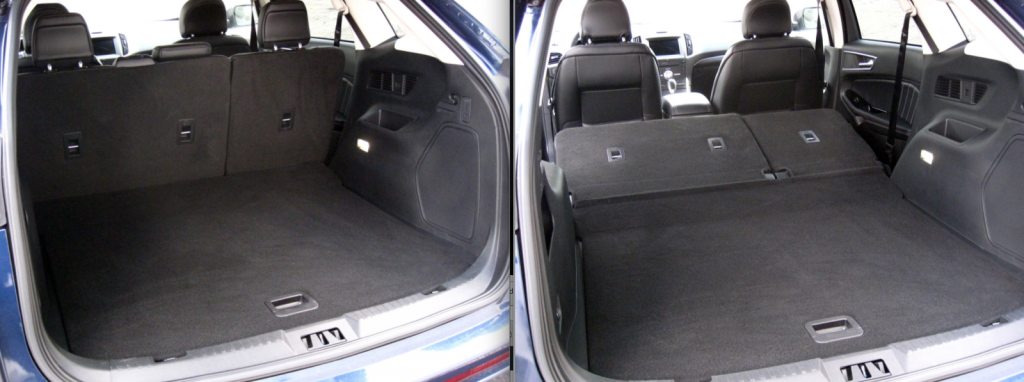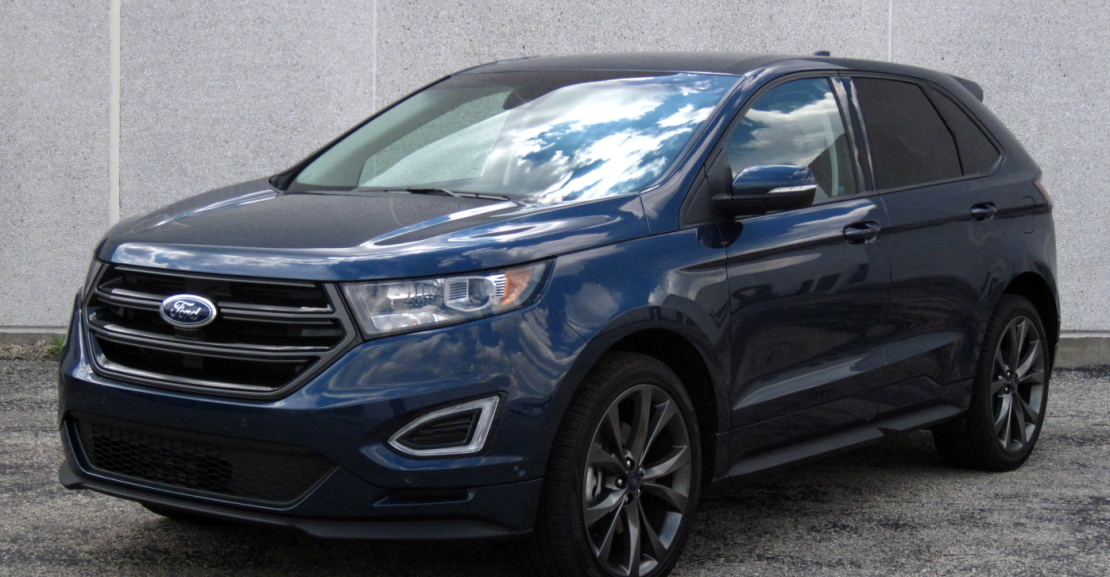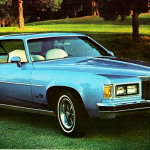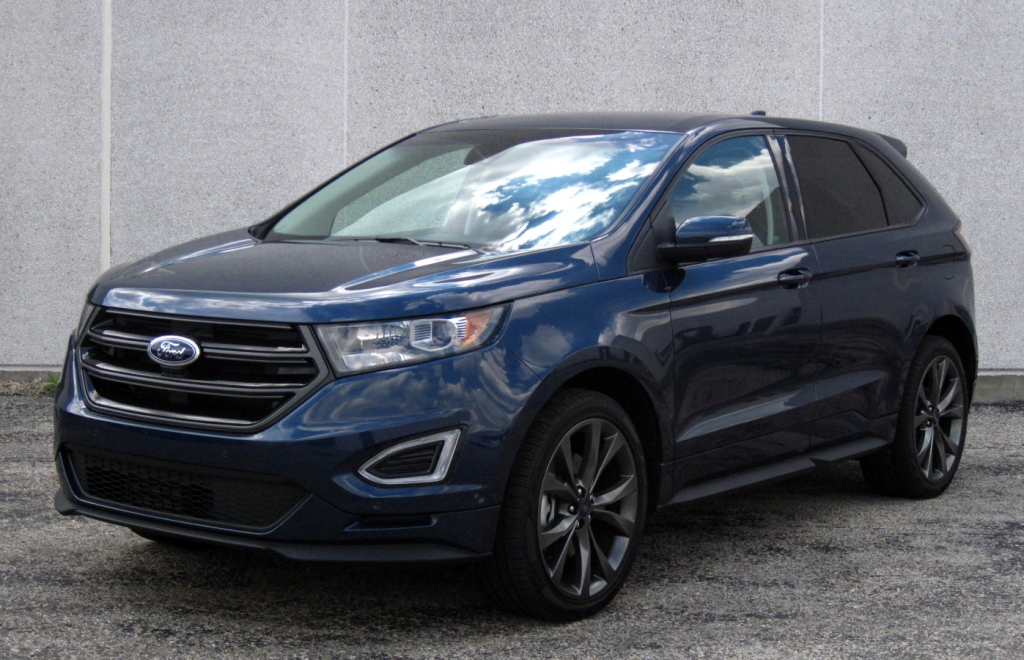
 2017 Ford Edge Sport AWD
2017 Ford Edge Sport AWD
Class: Midsize Crossover SUV
Miles driven: 300
Fuel used: 15.6 gallons
Real-world fuel economy: 19.2 mpg
Driving mix: 70% city, 30% highway
| CG Report Card | |
|---|---|
| Room and Comfort | B+ |
| Power and Performance | B |
| Fit and Finish | B+ |
| Fuel Economy | C+ |
| Value | C+ |
| Report-card grades are derived from a consensus of test-driver evaluations. All grades are versus other vehicles in the same class. Value grade is for specific trim level evaluated, and may not reflect Consumer Guide's impressions of the entire model lineup. | |
| Big & Tall Comfort | |
| Big Guy | B |
| Tall Guy | B |
| Big & Tall comfort ratings are for front seats only. "Big" rating based on male tester weighing approximately 350 pounds, "Tall" rating based on 6'6"-tall male tester. | |
EPA-estimated fuel economy: 17/24/20 (city, highway, combined)
Base price: $40,900 (not including $895 destination charge)
Options on test vehicle: Equipment Group 401A ($3345), Cold Weather Package ($350), adaptive cruise control/forward collision warning ($1150), 21-inch alloy wheels ($995), second-row inflatable shoulder belts ($195), AWD Discount (-$500)
Price as tested: $47,330
Quick Hits
The great: Spirited acceleration, passenger room
The good: Refined cabin, sporty handling
The not so good: Mediocre fuel economy, steep pricing
More Ford Edge price and availability information
John Biel
“What’s in a name,” William Shakespeare wanted to know all those years ago. If the Bard was in a Ford showroom today, kicking the tires on a midsize sport-utility vehicle, he might be wondering the same thing.
Lately a few manufacturers have put the “Sport” label on the basic model in a vehicle line, perhaps to suggest that dragging less stuff around makes for a more carefree “sporting” driving experience. Meanwhile, the names of precious metals have come into vogue for top-of-the line models.
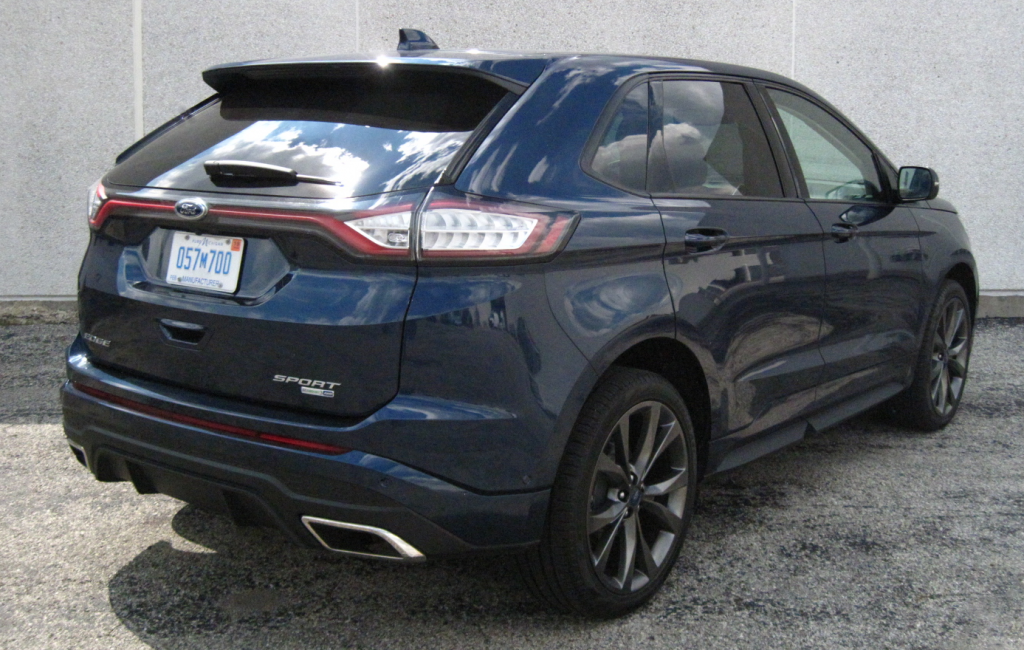
Ford has switched the script with the Edge. There’s a luxury-oriented Titanium among its four trim levels all right, but it’s not the top of the heap pricewise. That distinction belongs to the Edge Sport, which Consumer Guide® had the opportunity to test.
With a $40,900 starting price, the Sport is $3305 costlier than an all-wheel-drive Titanium, its closest-living relative. In terms of functionality, that difference buys a 2.7-liter turbocharged V6 engine, sport-tuned suspension, adaptive steering, and 20-inch alloy wheels. Interior distinctions are leather-trimmed seats with perforated sueded-cloth inserts and aluminum pedal covers. Exterior-appearance touches include a black grille with gray accents, specific headlamp-appearance treatment, black beltline molding, unique body-color front and rear lower fasciae, body-color lower cladding, and trapezoidal polished stainless-steel dual exhaust tips.
Test Drive: 2016 Ford Edge Titanium
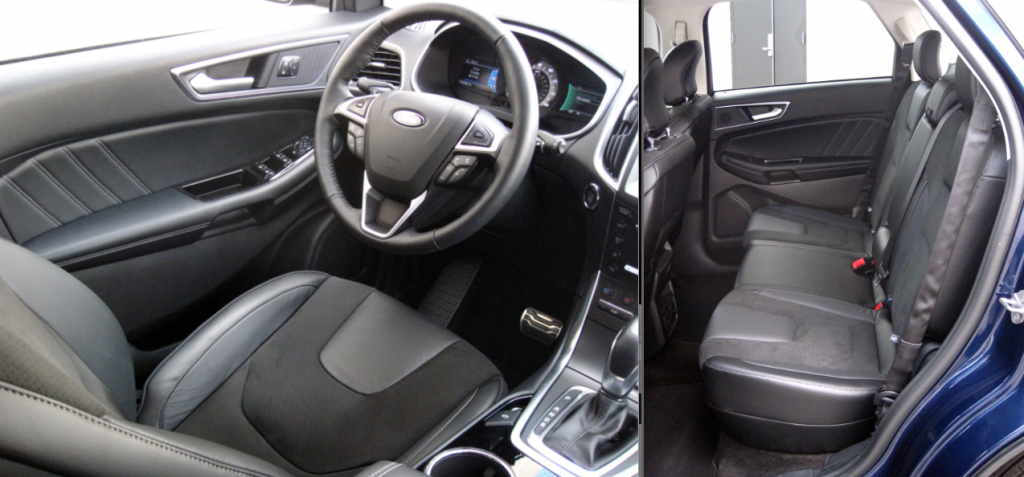
(A mini rant if I may: The window sticker for the Sport adds up the base price, option, and delivery costs, then subtracts an “AWD discount” of $500. It looks like a generous inducement has been granted for selecting all-wheel drive, but this is a vehicle with standard AWD. Why not just show the base price as $40,400 and skip the artificial benevolence?)
The Sport’s 315-horsepower EcoBoost V6 is joined to a 6-speed automatic transmission. There’s a little bit of an edge to the Edge with this powerteam. Building speed, you can clearly hear the point of each upshift but you don’t feel the snappily executed changes. Transmission kickdown is well timed for secure highway passing punch. The EPA rates this combination at 17 mpg in city driving, 24 on the highway, and 20 combined. This driver logged 187.5 miles in the Sport, and with 70-percent city-type driving saw 20.27 mpg.
Quick Spin: 2017 Mazda CX-9 Grand Touring
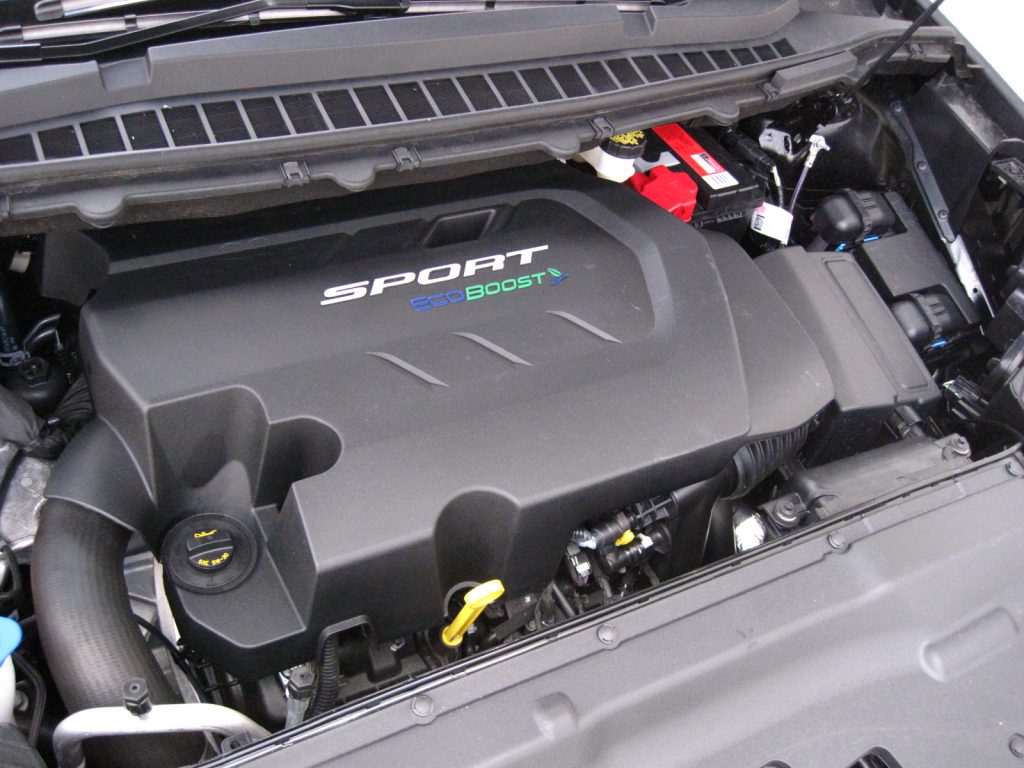
CG’s Blue Jeans Metallic test truck was outfitted with 21-inch painted-aluminum wheels, a $995 option, but still rode fairly well on its low-profile tires. There was little impact harshness, and even though the Sport leans a bit in corners, body control is pretty good. Steering is easy and precise enough for admirable maneuverability.
The suede-center seats are perhaps the one thing that stakes the Sport’s claim to sportiness on the inside. They’re comfortable and helpful for keeping passengers from sliding around too easily. Soft-touch material is found on much of the instrument panel and doors, and dashes of brightwork kept the test vehicle’s all-Ebony interior from seeming too stark.
Head- and legroom are very good in front. The second row is quite roomy as well. Plus, a very low driveline tunnel makes it possible for three people to occupy the second-row bench. Even an adult squeezed into the middle spot will have decent headroom. Entries and exits are unencumbered, and step-in height is not a problem on AWD models. However, vision to the rear corners is hampered somewhat by thick roof pillars.
Test Drive: 2016 Honda Pilot Elite
The driver faces a single gauge face for a round speedometer but small windows flank this dial on either side. They show vehicle information that can be called up via steering-wheel thumb buttons. Ford’s SYNC3 infotainment interface, dual-zone climate control, and 12-speaker audio system are standard. Audio, climate, phone, and other services are quickly accessed and operated on the 8-inch SYNC3 touchscreen, which has smartphone-style swipe and pinch functionality. Still, redundant audio-setting and climate controls are included on the dash below the screen.
Interior storage is a strong suit. There’s a sizeable glove box and a covered console box that’s not so long but very deep. A shallow flip-top bin tops the dash above the touchscreen, and there’s a small pull-out drawer to the left of the steering column. A covered bin at the front of the console houses two USB ports, and below this in the console there’s another small open space. Two open cup holders are in the console and two more are in the rear-seat pull-down armrest. Storage pockets in all four doors incorporate bottle holders. Rear passengers are also provided with storage pouches on the backs of the front seats.
Cargo loads at bumper height through a somewhat narrow hatch opening. The tailgate is supposed to be hands-free when you wave a foot under the bumper. (Most of those things treat this tester as if he’s the invisible man, and the Edge was no exception.) Two removable bins under the flat floor add hidden storage capability, and small-item receptacles are set into the cargo-compartment sidewalls. There’s very good cargo room with all seats up, but when the 60/40-split rear seats are retracted, hauling capacity is vast. The seats fold flat, and switches built into the left side of the cargo bay make the folding process a snap without having to go into the cabin.
There’s little new to the Edge for 2017. The Cold Weather Package, which was on the tested Sport, now includes a windshield-wiper deicer. The test vehicle also came with a package that added voice-activated navigation, heated front and rear seats, lane-keep assist, enhanced active park assist, and a 180-degree front camera among other things. With a couple more stand-alone options, CG’s sample Sport came to $47,330 delivered. There’s more available, too, so an Edge can get to be a pricey proposition.
